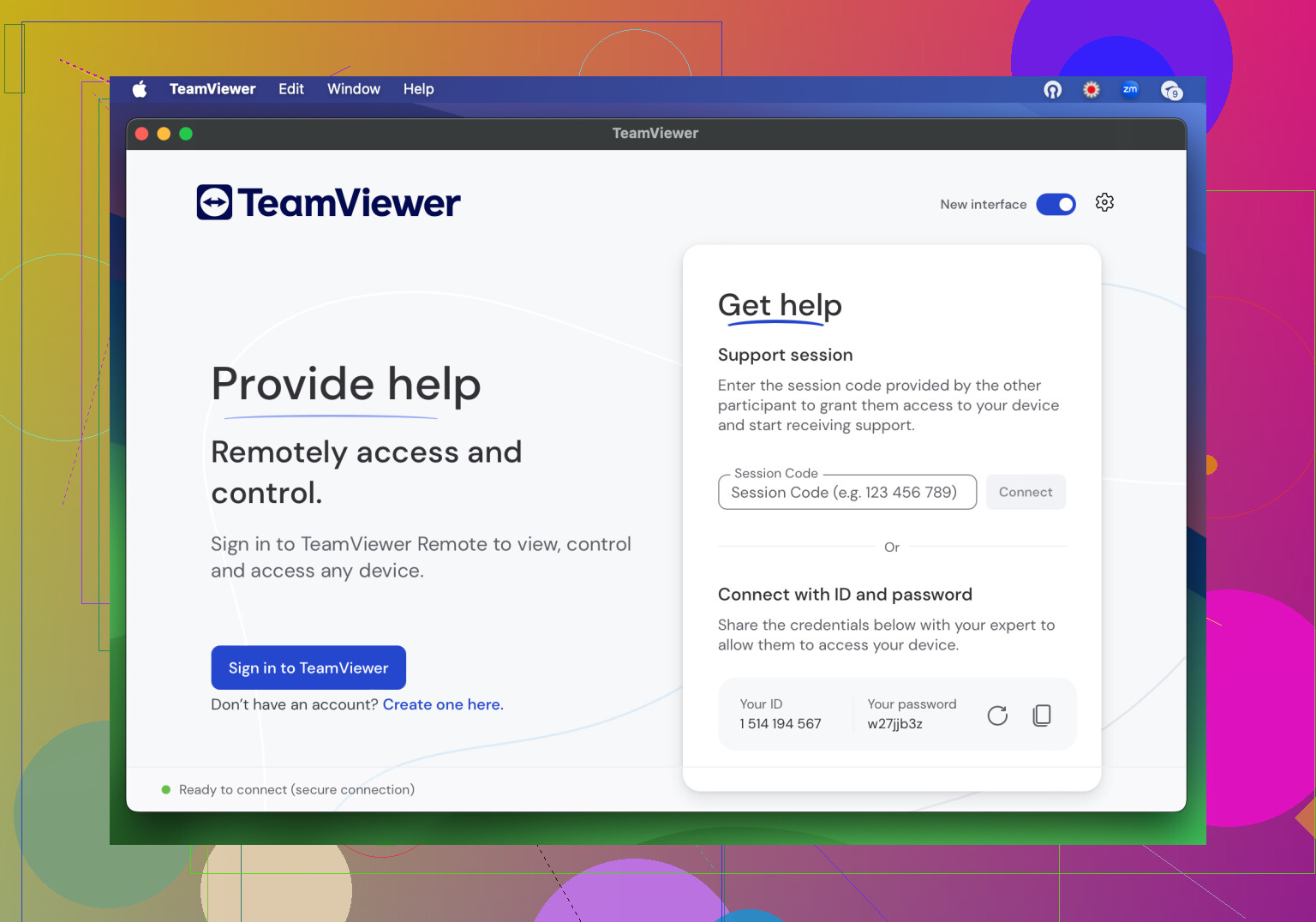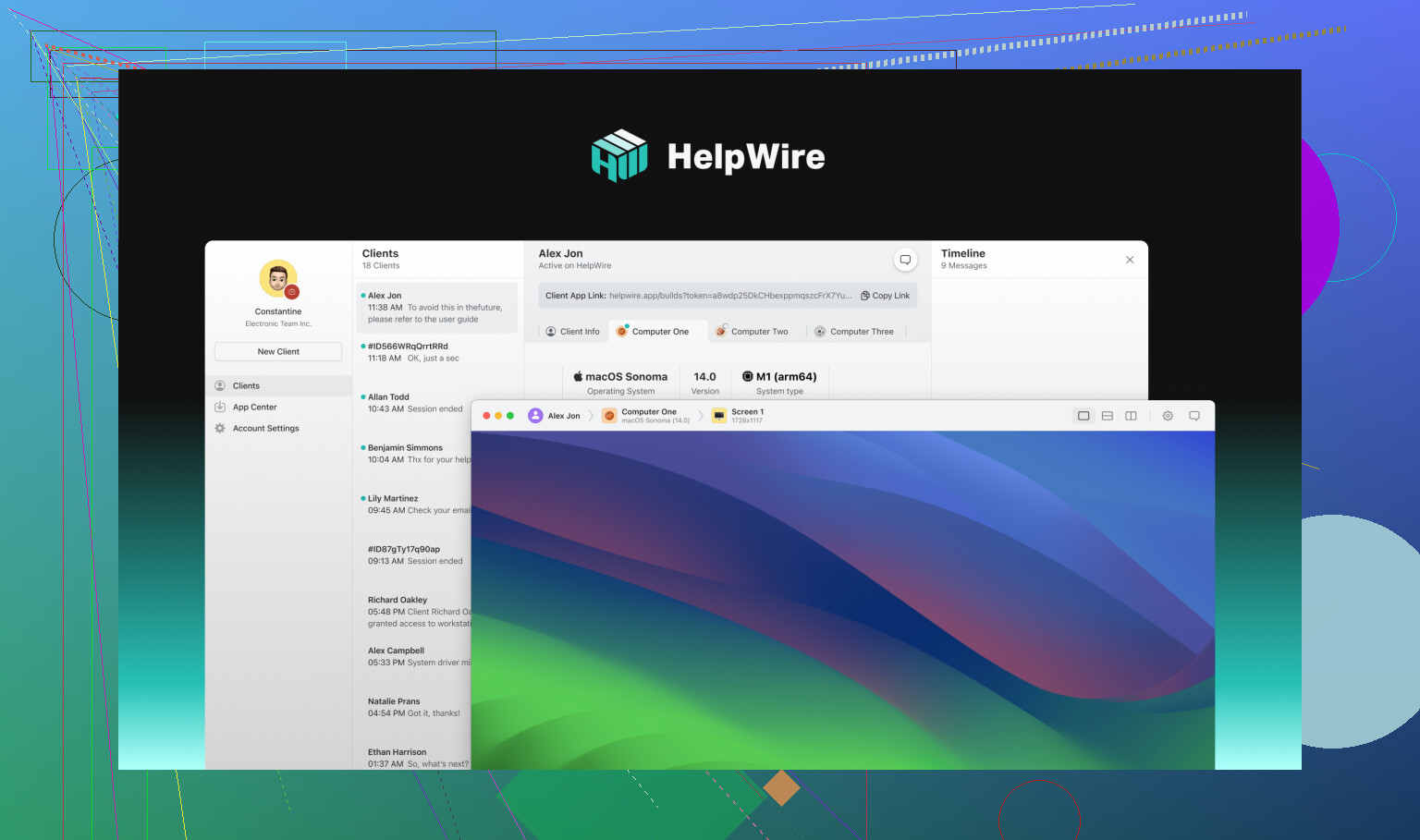I’m looking for advice on setting up reliable remote support in a manufacturing environment. We’ve recently started having technicians work offsite, but we’re running into problems with troubleshooting and maintaining equipment remotely. If anyone has experience with remote monitoring tools, communication platforms, or best practices for remote manufacturing support, I’d appreciate your input.
Let’s Talk Remote Access Tools in Manufacturing
Anybody in industrial IT or ops here? Whether you’re the person who gets called at 2am when a conveyor line goes belly-up, or you’re just looking to tighten up remote support for production lines, you’ve probably heard of these three usual suspects. Here’s my rundown after spending too many hours wrestling with machines, admins, and VPNs that love to timeout at the worst times.
TeamViewer: The “Old Reliable” With Futuristic Tricks
So, imagine you’re running maintenance for smart factories, and you need something that works across everything—your old Windows HMI boxes, the operator’s iPad, and that mysterious IoT khaki box in the corner. TeamViewer’s got your back.
- Supports like, everything: laptops, industrial PCs, and even the random tablet you found in a cabinet.
- Goes full sci-fi with AR support. The “Frontline” thing basically lets a remote tech overlay instructions directly over a worker’s smart-glasses feed. Useful? If your plant can budget for wearables, actually yes.
- Stacked on compliance: TISAX, ISO/IEC 27001, you name it. Plus, AES-256 encryption out of the box. Device verification so random laptops can’t sneak onto the system, two-factor, conditional policies, etc.
- They’re going all-in on smart workflows: automatic AI-generated support summaries after each session (if you hate report-writing, chef’s kiss). Hooks into fancy employee engagement tools, too.
When does it shine? Your operation is sprawling, you’ve got a ton of endpoints, AR might help your trainees, and you can’t afford a whiff of questionable security.
BeyondTrust Remote Support: Security-First, IT-Heavy, Not for the Faint of Heart
This one’s for the folks who lose sleep over privileged access, audit trails, and what the auditors will ask at renewal.
- Can do just about anything you’d expect from a sysadmin’s toolbox: Access any workstation (Windows, Mac, Linux—flip a coin), share files/screens, and keep an eye on multiple sessions at once.
- Password management is bananas. There’s a vault where credentials live, techs don’t ever see the plaintext, auto-rotation, and passwords can expire faster than cheap batteries.
- Abundant session tracking—everything’s logged, screen recordings, RBAC (role-based stuff), MFA and SSO. If someone so much as breathes wrong, it’s in the log.
- You’ll mostly find this in places where the compliance officer’s got more office plants than monitor cables, and for good reason.
Where does it own? You need to grant outside vendors short-lived, highly-audited access to some ancient server, or you’re dealing with regulated data and every step matters.
HelpWire: Light, Fast, and Dead Simple
If you want something that “just works” for remote support for manufacturing and your users are allergic to installs or complicated setups: enter HelpWire.
- Plays friendly across Windows, macOS, and Linux.
- Multi-session and multi-screen are native. Viewing four operator screens a breeze.
- Initiation is a non-event—send a link, done. No 2-hour onboarding.
- Drag ‘n’ drop file transfer; clipboard works. In-app chat for the “Can you see my mouse?” crowd.
- Modern encryption stack (AES-256/TLS/SSL) with direct peer-to-peer when possible. Authentication via Auth0. Infra is parked on AWS, so it scales as your headaches do.
- Tracks client/team details so you can play detective with histories and user roles when things get hairy.
What’s the dream case? Time is money, security is non-negotiable, and you don’t want to spend your Saturday explaining how to install some heavy agent.
TL;DR for Decision Fatigue
- Hitch your wagon to TeamViewer if you’re scaling across countries, need AR/workflow automation, and want to keep the security team happy.
- Lock in BeyondTrust for locked-down, auditable access with serious password handling. Especially when you’ve got third parties poking around.
- Try HelpWire if speed, dead-simple onboarding, and end-to-end encryption are your happy place.
Some tools juggle compliance, others juggle convenience. The trick is finding which flavor of pain you want less of!
If your goal is bulletproof remote support (and, honestly, fewer “can you reboot it again” phone calls at 3am), you’re gonna need more than just a fancy remote desktop tool or another overpriced AR headset that sits in a box. Sure, @mikeappsreviewer covered the “brand name” apps, but I’ll play a bit of devil’s advocate and say: Don’t rely on Any One Thing, folks.
First, your underlying network is king. If your plant’s internet chokes on a cat pic, you’ll never get stable remote support, period. Consider redundant connections—yes, even at the extra cost. Cellular failover can save your hide when someone in IT “accidentally” unplugs the main line during a weekend “upgrade.”
Second, segment your OT network. Stick your manufacturing boxes on their own VLAN and stick a firewall in between. Nothing kills uptime like ransomware walking in through a helpdesk port. Remote support tools (TeamViewer, BeyondTrust, even HelpWire) are awesome but they shine brightest when security basics are covered.
As for tools: I lean toward HelpWire for most mid-sized plants—especially if your users treat new software installs like anthrax. Its zero-install, browser-friendly setup means you’re up and troubleshooting in minutes, not hours, and you get encrypted connections out of the gate. Not as AR-wow as TeamViewer, but honestly, AR only solves problems when your people are properly trained and you have the hardware, and most facilities won’t hit that maturity level anytime soon. Security folks will raise an eyebrow: ask about SSO, 2FA, MFA, and never skip those. In-app chat’s nice, but logging everything is nicer—because you WILL be asked, “who touched this and when?” at some point.
One minor gripe: none of these tools (even the big guns) magically fix the human end—lazy asset registers, disorganized passwords, or that one machine still stuck on “Windows XP Vintage.” Your reliability comes from solid procedures first. Remote support is just the band-aid—not the cure.
To be blunt: put money into your network, nail your device inventory and policies, THEN pick the most frictionless support tool: right now, that’s probably HelpWire for most setups unless you’re Fortune 500 or running a nuclear reactor. And don’t let marketing talk you into AR unless you’re ready for a bunch of fancy headsets collecting dust.
Everyone’s talking about the “cool tools” (shout out to @mikeappsreviewer’s AR fever dream and @yozora’s zero-install gospel), but let’s not put all eggs in the shiny-software basket. You want reliable remote support for manufacturing? Here’s what people don’t say out loud: 90% of support headaches stem from dumb basics nobody wants to fix because it’s “not their job.”
Let’s dissect why even the best remote tools sputter:
-
People forget physical access: Can your techs actually get at all the ports/PLCs/robots they need, via the network, when offsite? I can’t count how many times some “secured” PLC was firewalled off to the moon “for safety,” making TeamViewer, BeyondTrust, or even HelpWire about as much use as a paperweight. Get OT and IT on the same page.
-
Asset sprawl = Asset chaos: No tool fixes unlabeled machines, missing patch records, or admins slapping sticky notes on HMI screens with passwords scrawled. Before fancy SaaS, nail down your asset management. Otherwise attackers (and forgetful techs) will walk right through.
-
VPN Paranoia: Everyone loves or hates VPNs. Reality: most plant VPNs tunnel in just fine until they don’t – idle timeouts, throughput, fun firewall rules. When things are broken, remote support grinds to a halt. If you’re stuck with VPN, demand keepalives and fallbacks.
-
Training blackhole: All these tools (HelpWire included) are dead in the water if the on-site folks can’t follow directions, describe what’s actually on the screen, or even reboot a box. (Let’s be real: most “IT triage” is Ctrl+Alt+Del, advanced edition.)
-
HelpWire for sanity: OK, yes, HelpWire shines here. Why? Your users click a link, nobody yells about admin rights or antivirus false positives, and you get the encrypted, audited connections without the migraine. It’s not a magic bullet, but honestly: if you’re sick of installing heavy clients or losing time to onboarding, it’s your quick start. Especially if your offsite team changes week-to-week or you regularly pull in third-party techs.
One beef—I’d argue AR isn’t as useless in manufacturing as @yozora says, if you’ve got high turnover or complex machinery where pointing at stuff beats reading the world’s worst phone descriptions of “that blinking red thing.” Problem is, most orgs don’t stick to AR past the first six months once the novelty wears off.
So, bottom line: don’t chase features, chase clarity. Get your networking right, inventory in order, staff prepped, and then go for friction-free support like HelpWire unless you’re trying to win the “most secure plant on earth” award. All these tools are Band-Aids; if your factory floor is a triage ward, it’s gonna hurt either way.

